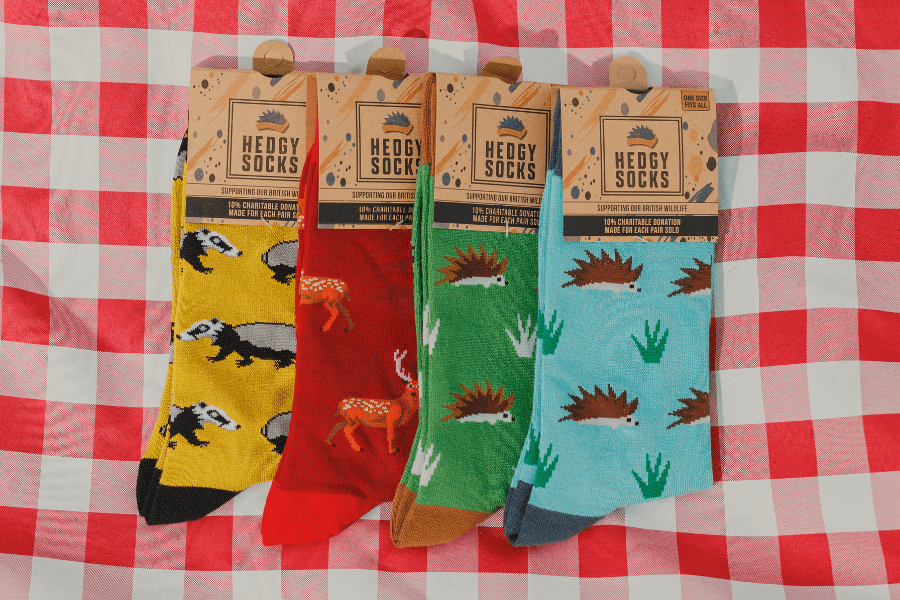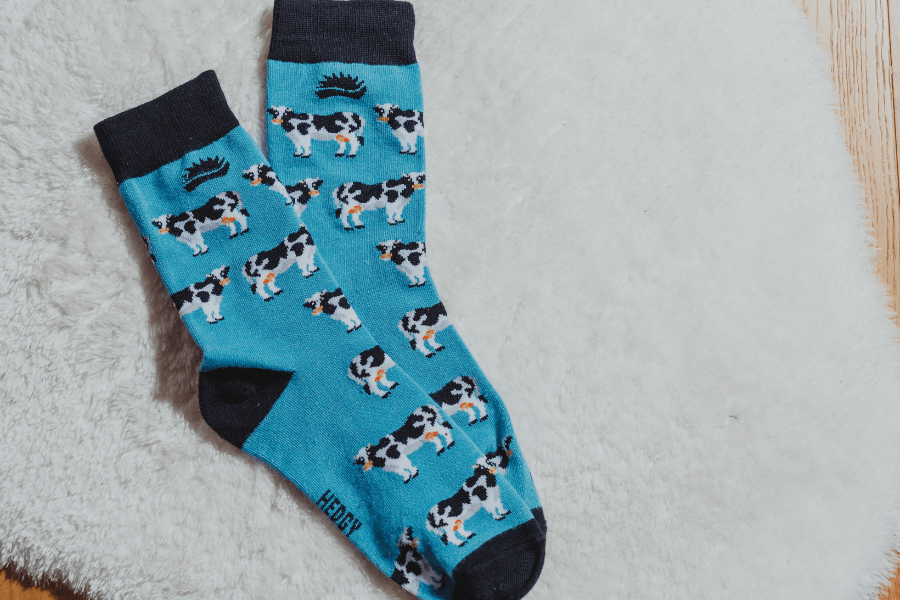
The big sock fight: Bamboo vs Cotton Vs Wool vs Polyester
Socks. Some people love them. Some people only wear them when they have to. They come in a range of different materials, including cotton, wool, and polyester - but which one is better? We are going to pit the top four sock materials against one another across five different categories and come up with the real winner - and why it is bamboo!
Comfort
One of the first things that come to mind when you purchase any type of clothing, not just socks, is its comfort. If it isn’t comfortable, you don’t want to wear it, regardless of how stylish, cheap, or sustainable it is. Comfort is king, which is why we are using it as the first category to score our socks in.
A few subcategories fall within comfort, such as warmth, their moisture-wicking abilities, whether or not they are thermoregulating, and how soft they feel on the feet. So, let’s start this fight off and see who comes out top in the comfort category!
Bamboo
Because of the smooth structure of bamboo, bamboo socks are luxuriously soft, often compared to cashmere silk rather than cotton or wool. It also has a number of comfort-enhancing abilities, such as being anti-bacterial and moisture-wicking, meaning that your feet will stay warmer and dryer, smell-less, and less prone to fungal infections such as athlete's foot.
Cotton
Cotton fibres are a lot finer than fibres of other materials, making cotton socks a very soft, comfortable choice. In addition to this, cotton is a naturally breathable material, allowing air to flow through the fabric and keeping your feet cool and dry.
However, cotton is not moisture-wicking. In fact, it is the opposite, even being called the ‘anti-moisture-wicking fabric’. This means that cotton socks will hold the moisture when you sweat, initially leaving your feet feeling hot and clammy but eventually making them cold.
Wool
Wool is known for its warmth. That’s why you have woolly hats and woolly blankets. But why is wool so warm? According to The Wool Room, wool fibres have small pockets of air that help heat circulate. These air pockets allow more heat to move closer to the body when cold.
These air pockets also mean that wool is breathable - the material can absorb and release moisture. However, wool fibres can be thick, stiff and unable to bend, which can lead to itching and irritation.
Polyester
Polyester is the most widely used fabric across the world. However, it is made with harsh chemicals that can cause it to irritate sensitive skin.
There are contrasting opinions on whether or not polyester is comfortable, but it stretches easily, meaning that polyester socks can have a better fit than other materials.
Winner
So, in the comfort category, bamboo wins!
Durability
It may not be that important, but durability means your socks will last longer. And longer-lasting socks mean less frequent purchasing - which is good for your bank balance and the environment.
Bamboo
Bamboo fibres are naturally strong and elastic, meaning that they can retain their shape and stretch for a long period of time, even after multiple washes. The average lifespan of a pair of bamboo socks can vary, but they can last for up to three years if cared for correctly.
Cotton
Cotton is incredibly strong. And one thing that sets it apart from the rest, is that it actually gets stronger when it is wet, meaning that you don’t need to worry about your washing machine shrinking or stretching your socks out of shape.
Wool
Wool fibres can bend up to 20,000 times before breaking, meaning that it is a lot stronger and tear-resistant than other materials.
Polyester
According to sports apparel design and manufacturing company SCI, polyester can stretch without tearing, is resistant to abrasion and normal wear and tear, and doesn’t easily pill like other fibres.
Winner
On this one, it’s a tie. They’re all incredibly durable materials - so maybe pick your sock material in another category rather than just this one!
Sustainability
Nowadays, sustainability is a crucial factor in most people’s minds when it comes to choosing between different products. People want to make choices that still benefit them but are better for the environment.
Bamboo
Bamboo is the fastest growing plant on the planet, making it an ideal option for making socks out of, and it is naturally renewable, so it doesn’t need to be re-planted after being harvested to continue to grow.
In addition to this, bamboo is water-efficient. It uses 200 times less water to produce fabric than cotton does and only requires one-third of the amount of water to grow than cotton.
Cotton
Although natural, cotton is not very environmentally friendly. In certain regions, such as India, up to 20,000 litres of water are required to produce just 1kg of cotton.
Wool
Similar to bamboo, wool is incredibly environmentally friendly, as long as organic farming practices and animal welfare standards are followed. It is also biodegradable and recyclable and needs very few chemicals during the production process.
Polyester
Polyester isn’t very sustainable. It’s not biodegradable and is partially made from petroleum, the largest pollutant and a key driver of climate change.
Winner
This one was almost a tie between bamboo and wool. But the fact that bamboo is naturally renewable and that wool comes from living animals means that bamboo snags the win again.
Care
Another important factor in buying your clothes is how you care for them. You don’t want something difficult to look after properly, so knowing how to care for them is essential.
Bamboo
To keep your bamboo socks in tip-top condition, washing them separately from other things is recommended. However, we live in a cost-of-living crisis, so it’s impossible to do that. In that case, getting a mesh laundry bag will prevent them from stretching or piling, and you’ll never lose a sock again.
Cotton
Cotton socks are easier to care for, as they can be machine washed, hand washed, and tumble dried, all at low to mid temperatures. However, care is still necessary; if you wash them too hot, they could shrink.
Wool
Wool socks are also difficult to keep in prime condition. They should be turned inside out and separated by colour, hand-washed in cool or lukewarm water with mild detergent and air-dried flat. You should also reshape them when they’re drying to prevent stretching.
Polyester
Like cotton, polyester is relatively easy to care for. However, care is required to stop them from stretching. Wash on a regular cycle using a gentle detergent. High heat can break down the fibres in synthetic materials, so washing at lower temperatures is essential.
Winner
This is a tough call; every material needs extra care to remain in good condition. However, cotton may have it here.
Overall winner
So, the different materials have been pitted against each other in the fight to be crowned top sock, but who wins? Well - surprise, surprise - bamboo socks have come out on top, coming first in both the comfort and the sustainable category!
Shop our range of bamboo socks today.

